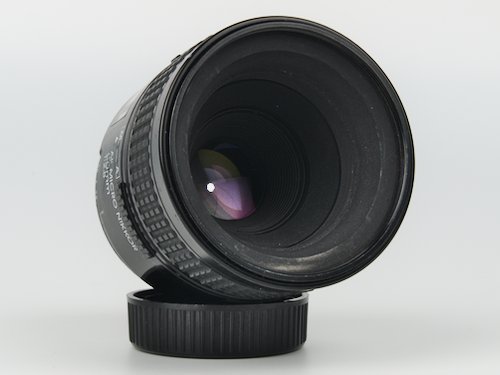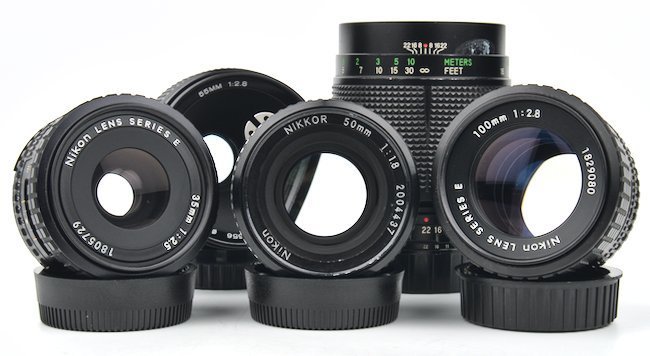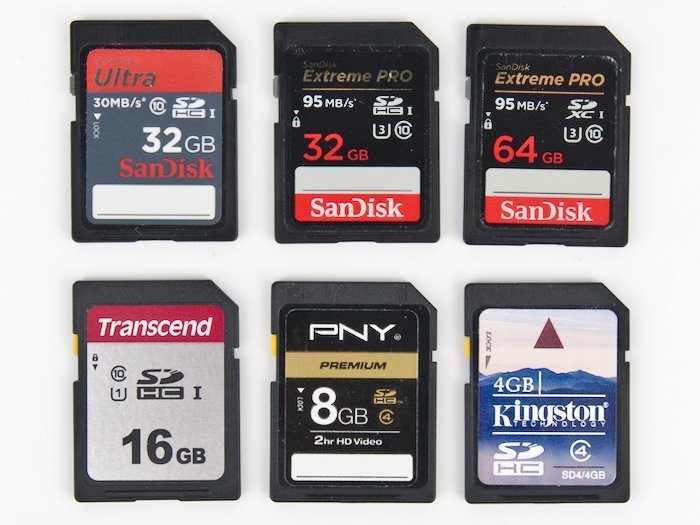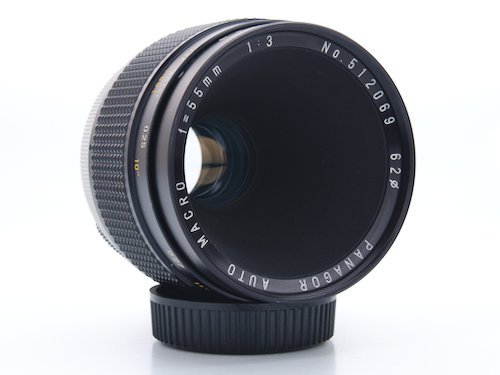
Nikon Micro Nikkor AF 60mm f/2.8 Lens Review
Table of Contents
The 60mm f/2.8 Micro Nikkor was released as a replacement for the unpopular and short-lived, 55mm f/2.8 AF Micro Nikkor.
The autofocus in the lens is driven by a screw drive motor built into some Nikon camera bodies. Nikon has been phasing the motors out of entry-level DSLRs for several years.
Camera bodies such as the D5600 or D3500, will not be able to drive the autofocus for the lens. The Nikon F to Z mount adapter will also not provide autofocus. Manual focusing will still work.
The auto focus on this lens requires a camera body to have a worm drive motor. Nikon has been removing the motor from cameras to reduce manufacturing costs. This also pushes people away from the used market to new lenses.
Used Price and Where to Buy
The prices on this lens can vary by a great deal. People seem to treat the AF and series D lenses the same.
If you want to get a deal, pay close attention to listing photos for the lens. Sometimes people will incorrectly list a D-series lens as the earlier AF version.
My suggestion is to check several places to find what’s currently the best price.
Affiliate Advertising Disclosure
Outside the Shot is a participant in the Amazon Services LLC Associates Program, an affiliate advertising program designed to provide a means for sites to earn advertising fees by advertising and linking to Amazon.com.
As an eBay Partner, I may be compensated if you make a purchase. I also participate in affiliate advertising programs with KEH and Adorama. More can be found on the Affiliate Disclosure page.
See current price and more information on:
Build Quality, Design, and Sample Variation
The first thing that comes to my mind when handling the lens is the cheap plastic feeling. This is because the outer barrel of the lens is plastic, while the internals are made out of metal.
Instead of engraving, all of the text on the lens has been screen printed. Some of the text on my copy of the lens has begun to wear away. Personally, I prefer the build of earlier manual focus 55mm Micro Nikkors.
The lens has a manual/autofocus ring. This ring provides a way to change focus mode on the lens, rather than the camera.
There is a pin lock that keeps the ring in place. I do not find the pin comfortable to press, easy to locate, or enjoyable to use.
Another lens feature is the inclusion of a limit switch. When set to limit, the lens will not focus in the macro range. This will prevent focus hunting and speed up autofocus when close-focus is not needed.
I have no complaints about the location or the haptic feedback from toggling the switch.
https://www.outsidetheshot.com/AF-Micro-Nikkor-60mm-f28-Macro-Lens-Limit.jpg does not existThere is a window covering the distance scale. That is a nice feature to prevent water, dust, and debris from getting into the lens. It is a design feature that is shared among early AF and D-series lenses.
The autofocus in the lens is driven by the camera via a motor drive. It is also fairly heavy, which results in an awful manual focusing experience.
The focus ring is heavy, feels imprecise, and gives mechanical feedback when rotated. There are 360 degrees of travel between infinity and 1:1.
With the limit-switch engaged there is less than 90 degrees of travel. I do not like manually focusing with this lens.
Electronically controlling the aperture works great. There is a lock on the lens that will prevent the aperture from being changed once set to electronic control.
The aperture ring has a smaller diameter than the rest of the lens, which makes it hard to reach. A larger amount of force than expected is needed to manually change the aperture on the lens.
Manually changing the aperture was more difficult than it should be. I would often overshoot the aperture I wanted because it felt like it was stuck in place until it began to move.
This is not a problem with my copy of the lens, as the Nikon AF Micro Nikkor 105mm f/2.8 I have has the same problem. I quickly got annoyed with the aperture and focus ring with the lens adapted to a Sony A7.
My copy of the lens is in good condition. I don’t see any internal dust. There are no signs of problems with the grease.
Some of the printing on the barrel of the lens is worn. My only issue is that the manual/auto selector is a bit stiff and hard to switch. Overall, I am happy with how the lens has held up.
https://www.outsidetheshot.com/AF-Micro-Nikkor-60mm-f28-Macro-Lens-Mount.jpg does not existUsage & Working Distance
All of the test shots were taken with a Nikon D750. The lens also worked without autofocus when used on a Sony A7 by using a Novoflex adapter.
Weight is distributed towards the rear of the lens, so it handled well on the D750. On the A7, the setup becomes lens heavy and was not comfortable to handhold.
https://www.outsidetheshot.com/AF-Micro-Nikkor-60mm-f28-Macro-Lens-Extended.jpg does not existTest Shot Sharpness Comparison
- f/2.8 - Chromatic aberration in the corners which looks out of focus. Shockingly bad performance. I retested the lens on both the D750 and A7 because of how bad the image quality was.
- f/4 - Corners are still soft with very noticeable chromatic aberration.
- f/5.6 - The center is sharp, but the corners are still soft.
- f/8 - Outer edges of the corners are soft. Chromatic aberration is no longer visible.
- f/11 - Improvement in the corners. A slight loss in fine detail as diffraction is beginning to set in.
- f/16, f/22, f/32 - Diffraction progresses and sharpness gets worse.
Autofocus
The autofocus is slow and inaccurate. Manual focusing is faster for closeup and macro magnification.
On my D750 the lens hunts around and I’m not surprised when the lens misses focus. Also, the auto focus is never going to work with an adapter.
This is an early AF design by Nikon that is driven by the camera body via a screw drive. Nikon is never going to produce an adapter capable of powering the auto focus in this lens.
Macro Magnification
https://www.outsidetheshot.com/AF-Micro-Nikkor-f28-Macro-Lens-11-f11.jpg does not exist https://www.outsidetheshot.com/AF-Micro-Nikkor-f28-Macro-Lens-11-sony.jpg does not existThe lens is on the heavy side, the aperture is not easy to manually operate, and the image quality is lacking. I didn’t stick the lens on my bellows because I thought that it would be an annoying experience.
Underwhelming results don’t get better by extension or reversing a lens. There are better choices, like the Vivitar 55mm f/2.8.
Comparable Lenses
- Vivitar 55mm f/2.8 Macro - Available in several lens mounts.
- Micro Nikkor 55mm f/3.5 PC
- [Olympus OM-System 50mm 3.5 Auto-Macro]/(olympus-om-50mm-f-3-5-zuiko-auto-macro-lens-review/)
- Canon FD Macro 50mm f/3.5
Conclusion
If the lens is cheap enough, or you already own a copy of the lens, it is fine. The performance at f/8 is in line with every other comparable macro lens I have tested.
The performance at wider apertures is poor in comparison with less expensive lenses. In fact, I prefer the earlier Micro Nikkor-PC 55mm f/3.5 to this lens. I expect both of the AF Micro Nikkor 60mm lenses to depreciate in the coming years as Nikon transitions from the F-mount to the mirrorless Z-mount.
Screw drive auto focus lenses are going to fall in value. Nikon did not release an adapter that is able to power the auto focus on the screw drive AF lenses with the release of the Z6 and Z7.
The manual focus experience is not as good as fully manual lenses or with lenses that have AF motors built-in. All of the screw drive lenses that do not offer exceptional performance are going to be dropping in value over the next decade. I expect both of the 60mm AF Micro Nikkor lenses to lose value in the coming years.
I would not recommend buying this lens. In fact, if you own a copy of this lens, I suggest selling it. There are other options that are better suited to be adapted to mirrorless cameras. On top of that, they also likely perform better. I would prefer to use any of the lenses listed below:
Lens Specifications
| Manufacture | Nikon |
| Made in | Japan |
| Year Released | 1989 |
| Original Price | $277.95* |
| Elements Groups | 8 ele. 7 gr. |
| Focal Length | 60mm |
| Aperture | f/2.8-32 |
| # Aperture Blades | 7 |
| Aperture Control | Manual, Auto Diaphragm |
| Focus Type | Manual |
| Hard Infinity Stop | Yes |
| Magnification | 1:1 |
| Minimum Focus Distance | 21.9cm (8.6”) |
| Working Distance | 7.5cm (2-15/16") |
| Filter Threads | 62mm |
| Weight | 16oz (460g) |
| Dimensions | ⌀70mm x 96mm (2.75" x 3.75") |
Note: Price is from a 1989 Competitive Camera Corp Catalogue.
https://www.outsidetheshot.com/AF-Micro-Nikkor-60mm-f28-Macro-Lens-Barrel.jpg does not existAccessories
The HN-22 lens hood is designated for this lens. Increasing the lens magnification brings the front element forward.
At 1:1 magnification the front element is only recessed into the lens by ~1/2" (13mm). When focused at infinity the front element is recessed ~1.5" (4cm).
A lens hood should not be necessary for most shooting. For situations that can be highly prone to lens flare, a lens hood would be good to have.
Lens Versions
- AF Micro Nikkor 60mm f/2.8 - 1989
- AF Micro Nikkor 60mm f/2.8 D - 1993


